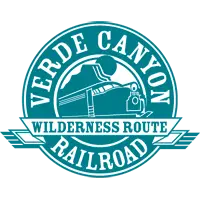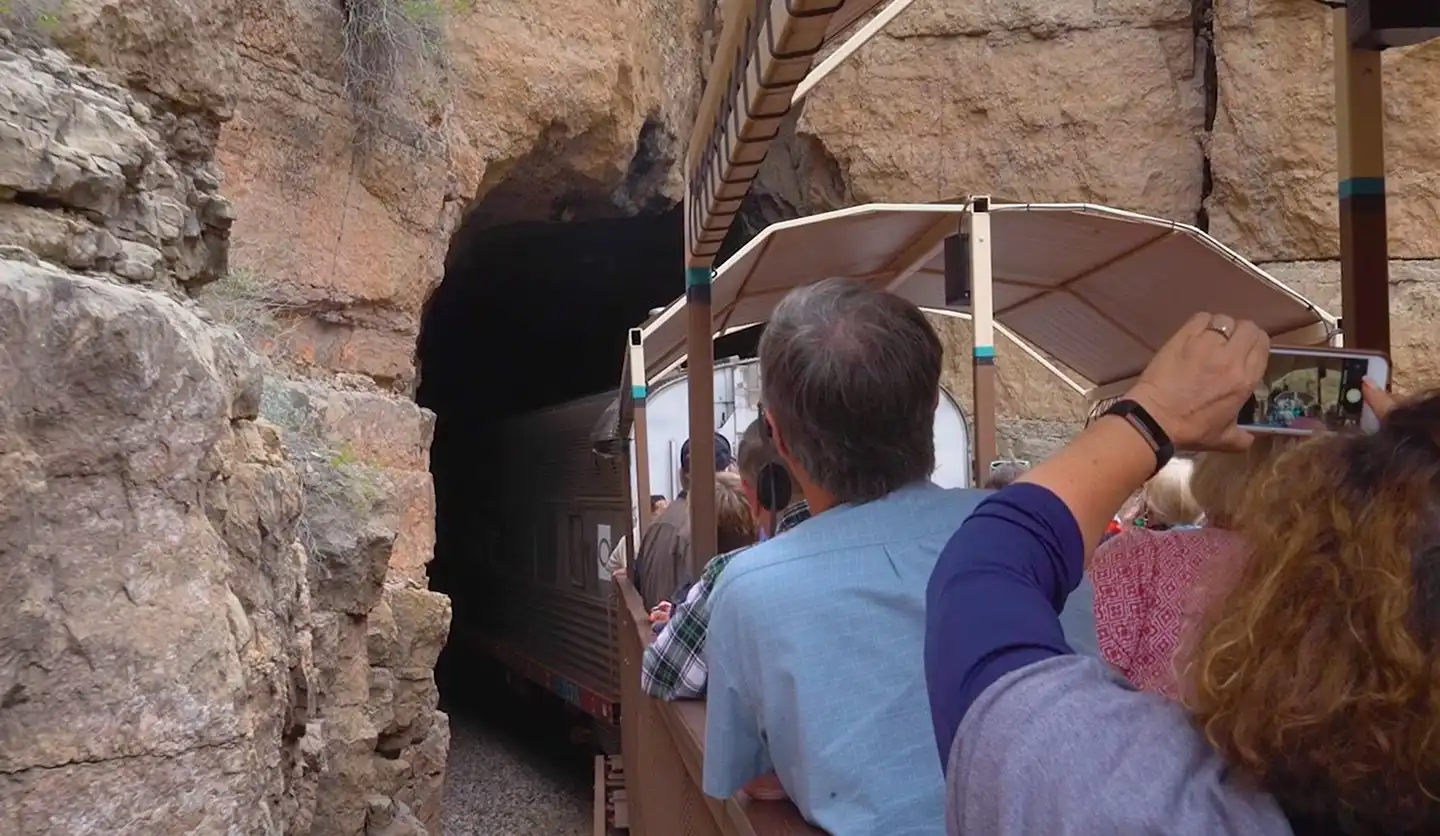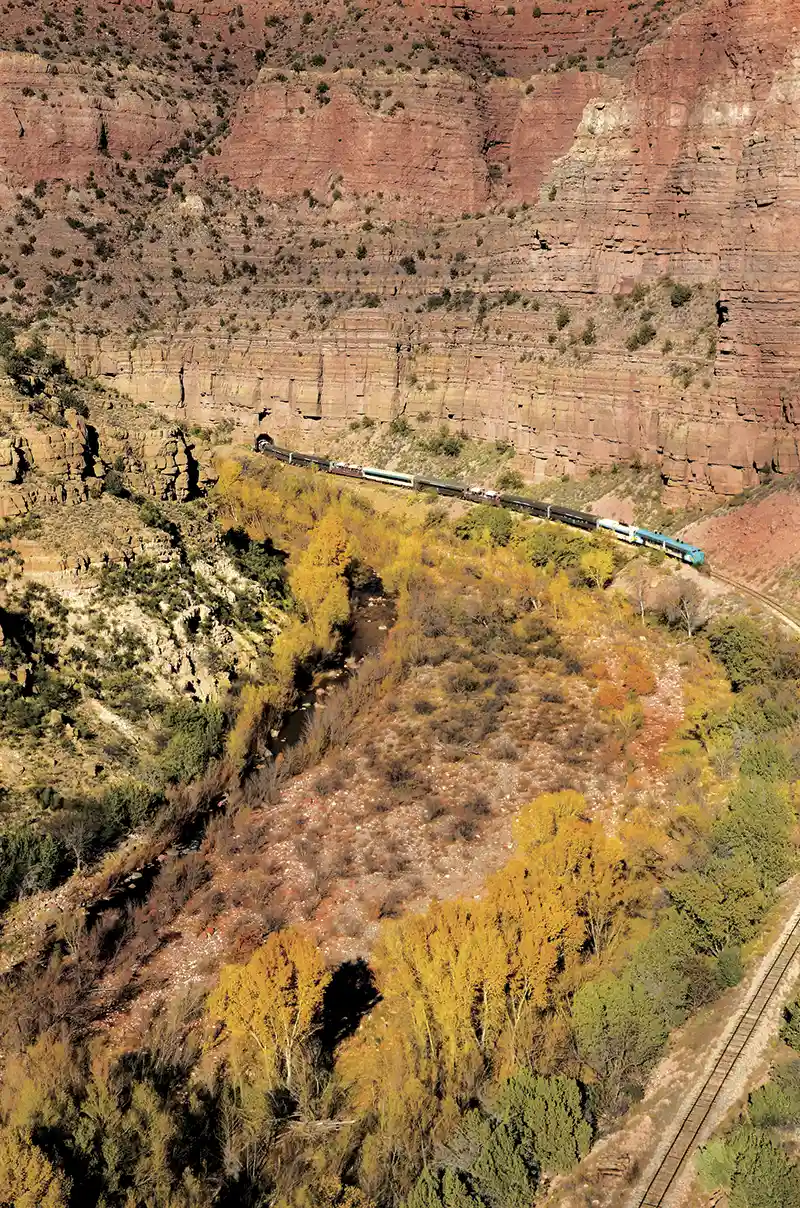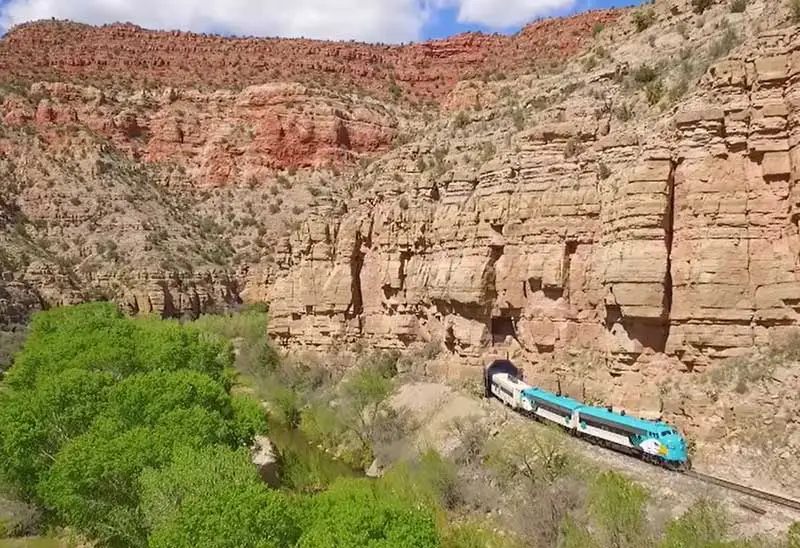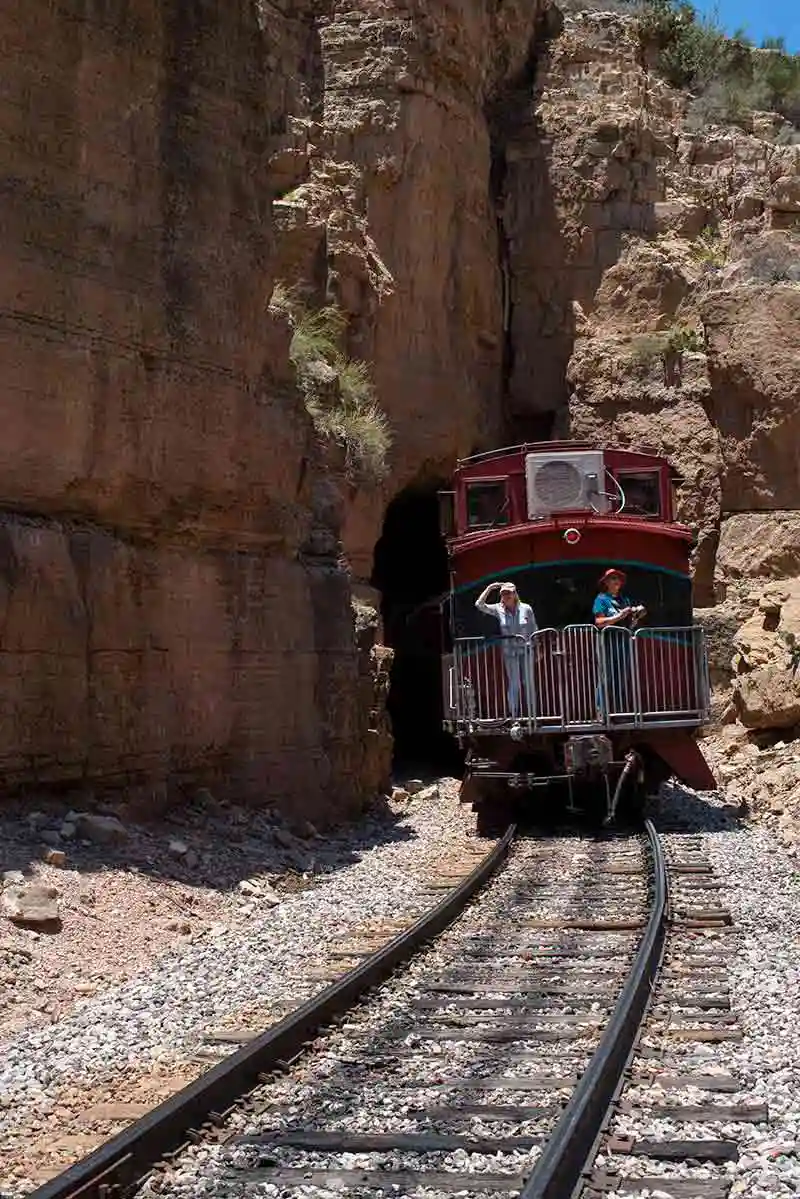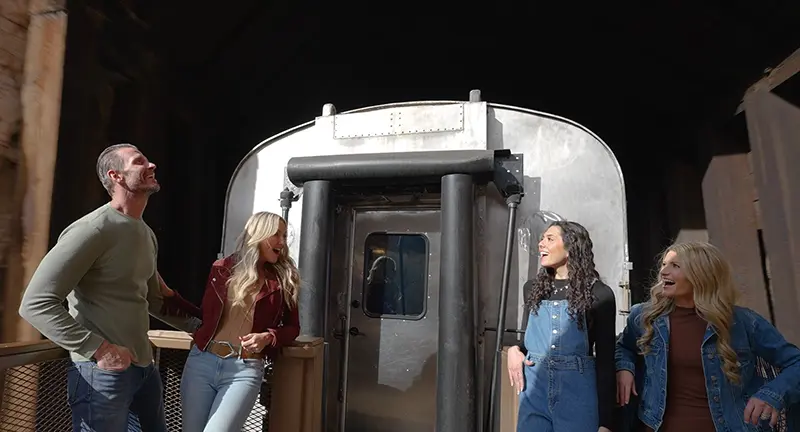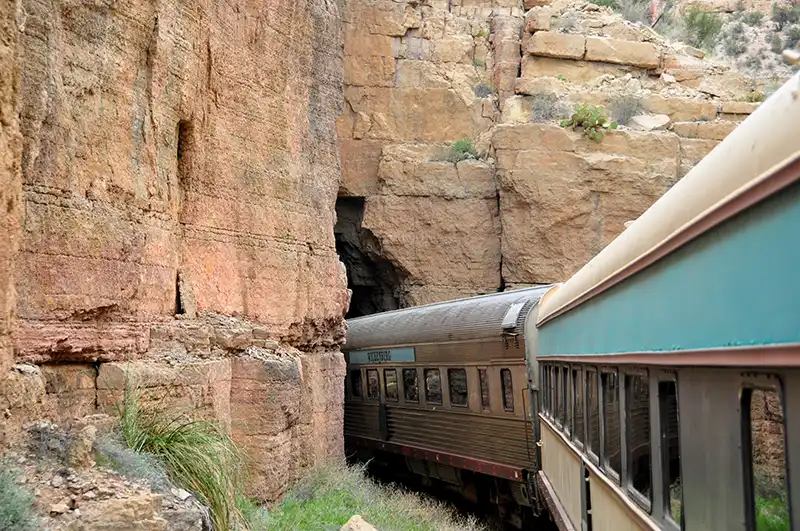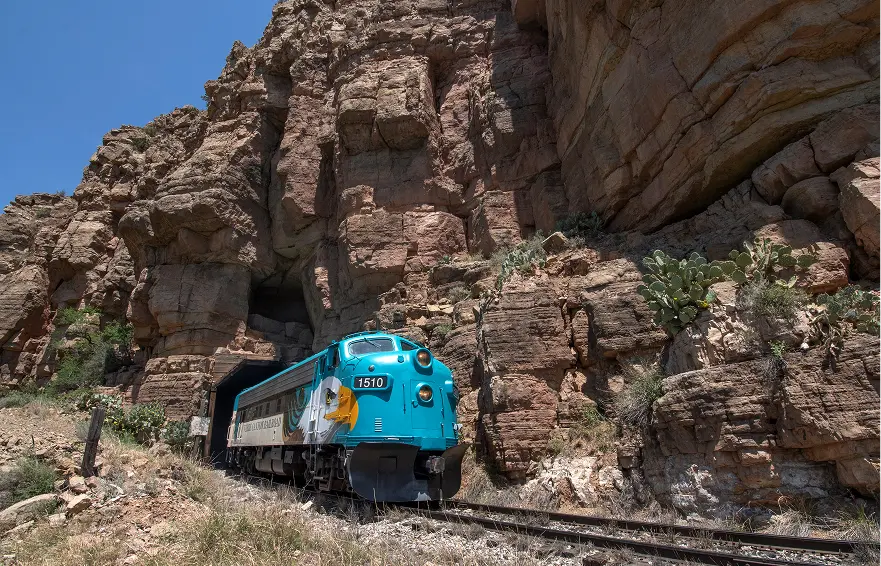Tracks through the Canyon
Manmade Masterful Presence
The natural beauty of the Verde Canyon has survived and expanded for millenniums, but in 1911, when rails were laid down through the narrow chasm, it changed. The ingenuity of man’s synthetic achievement to build an iron road to transport copper ore to fuel a country transitioning from an agricultural to industrial economy added a masterful presence in the Canyon.
This great gap in the earth’s crust is almost inaccessible by any means other than our train because rough dirt roads come to an end at either end of the deep crimson confines of the gorge. The few who have pioneered or explored the Canyon’s glory made their way on foot or horseback. Today, we celebrate those who built the 20 miles of Verde Canyon Railroad through this remote and robust terrain because the bones of the track are part of the journey.
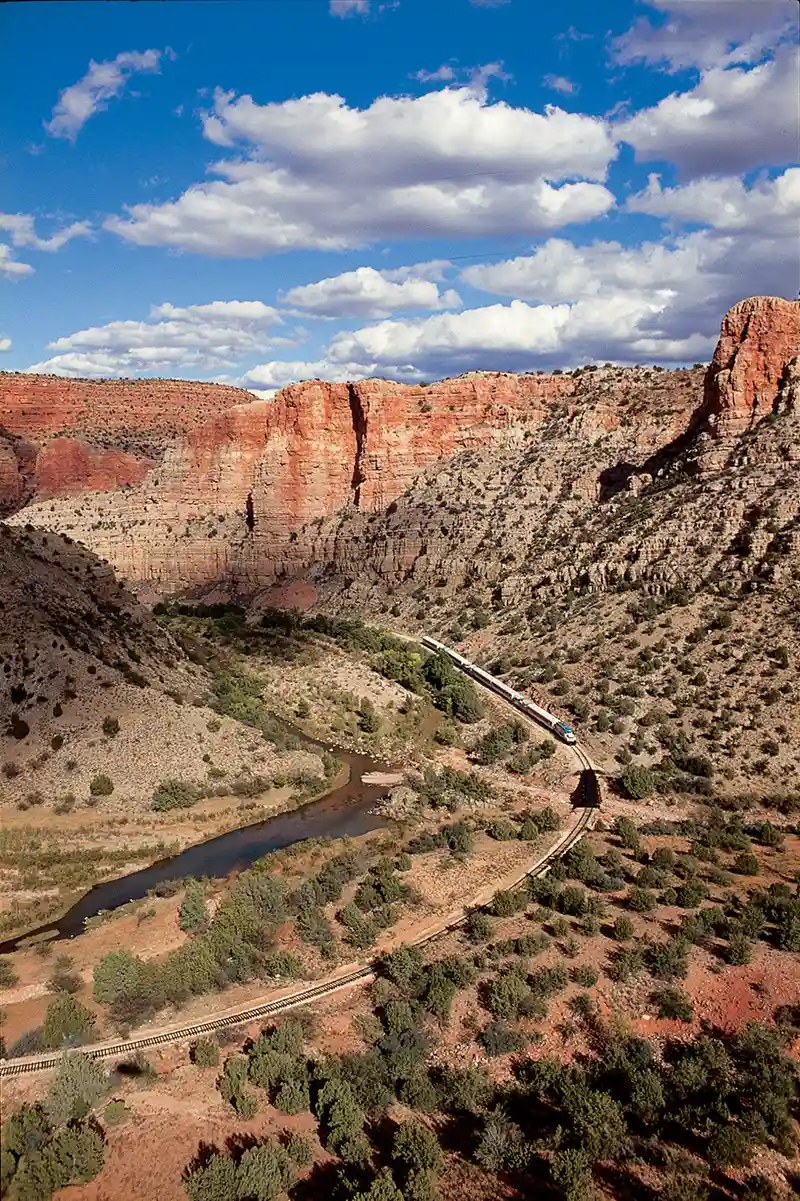

Connecting the Past
The first excursion train of Verde Canyon Railroad rolled out of Clarkdale on November 23, 1990. It carried neither freight nor ore, only people. They were not seeking a better way of life, but the beauty of a wild river-carved canyon where green waters percolate with life and breezes make music in the cottonwoods.
Along the way they hoped to catch a glimmer of the ones who came before, whose perseverance, vision and hard work made it all possible. That’s what a railroad is: not just lengths of iron linking one place to another, but a symbolic connection of the past to the present.
A Mountain of Slag
Gold sparked the nation’s mining boom, but it was copper that ignited a commerce chasing the Industrial Revolution. Gold ingots could be hauled out of the hills on the backs of burros, but copper required a smelter and plenty of land around it for the mountain of slag that smelting would leave behind.
The 40-foot-deep, 40-acres-wide pile of waste produced by the United Verde Copper Company smelter in the early part of the last century has forever altered the landscape that cradles the tracks. The molten slag that has solidified and become one with its rusted barriers is a fascinating reminder of an industry that electrified our nation and a metal that is still used in just about anything that requires a switch.
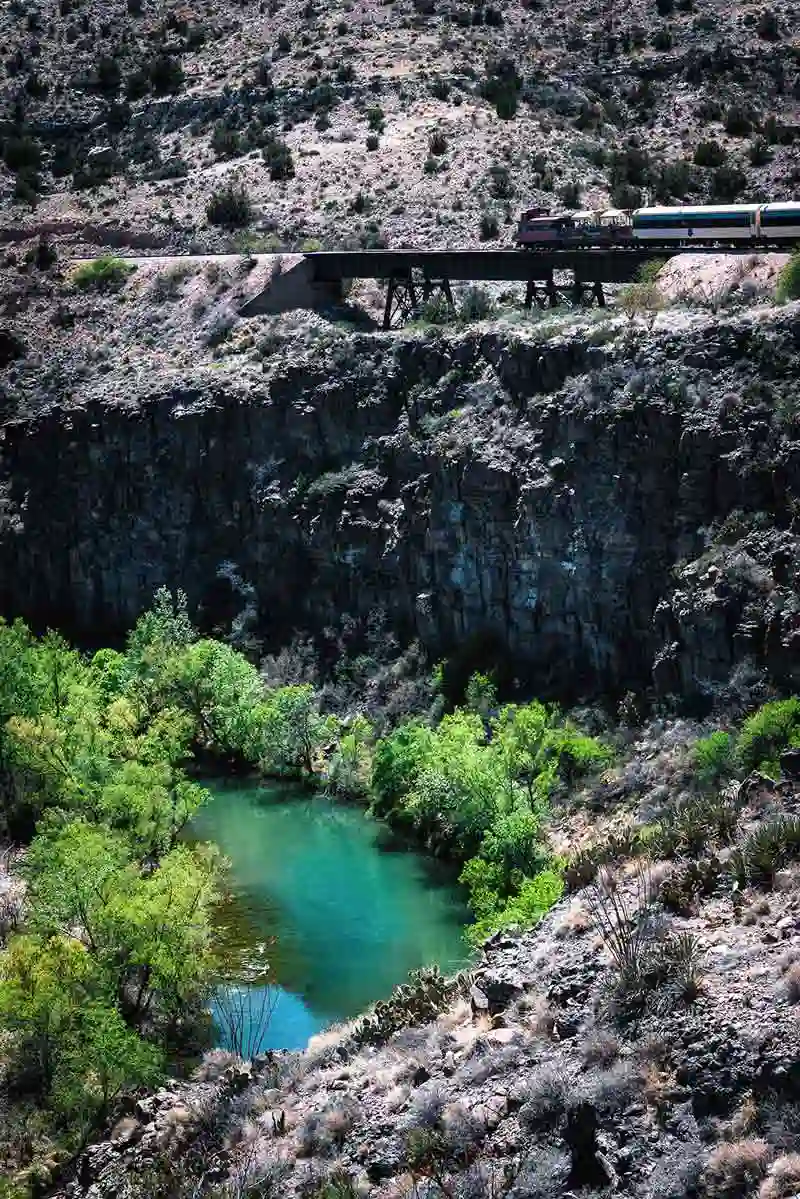
Traversing the Gorges
A surfeit of bridges and trestles had to be designed to span much of the wilderness ravines created by centuries of unpredictable flooding from the water that comes rushing down through tributaries during monsoonal storms. Engineers learned from experience that fire was enemy number one when erecting wooden bridges; it was steel that became the redeemer. Except for a few short spans, most of the 24 overpasses on this line are made of this high-tensile-strength alloy, including those that have names that have endured since the birth of the Railroad.
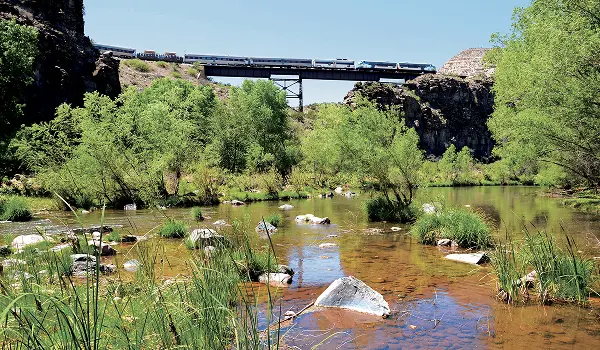
The first trestle that the Railroad crosses was recycled from an old turntable that once serviced the Prescott roundhouse. To no surprise, it is called “Turntable Bridge.” The most prominent trestle on the route is the 175-foot-long “S.O.B. Bridge,” which crosses over a 150-foot-deep basalt gorge. A stamp on the bridge indicates that is was certified by the Superintendent of Bridges, hence, the acronym. Most laugh that the letters stand for the short version of a profane expletive penned by the construction crew charged with erecting the structure. One popular legend attributes the bridge’s name to a river pilot, Bill Diamond, aka “Sweet Ol’ Bill.” The third trestle with a moniker is the truss bridge that signals entry into the turn-around point of Perkinsville. We call it “Perkinsville Bridge.” This is one of two identical bridges that spans the Verde River. The other is located on the route from Perkinsville to Drake, tracks not traveled by Verde Canyon Railroad.
There’s something about being on a bridge in breathtaking scenery that just screams freedom. The tracks below the train aren’t really visible and the railroad cars seem like they are soaring over the gorges below. The sound of steel on iron seems to reverberate below you as the wheels move the train forward over these manmade marvels.
Curve after Curve
Father Time and Mother Nature had a hand in creating the spectacular scenery that envelopes the Verde Canyon Railroad tracks. Wind, water and erosion are the culprits responsible for sculpting the curvaceous rock landforms that spring from the banks of the Verde River. The only way that the Railroad could master the topography around these beautiful formations was to follow the sinuous path of the waterway.
750 men with picks, shovels and a lot of dynamite strapped over the backs of donkeys laced their way around the rocky and towering cliffs in our nirvana, which they thought seemed more like punishment than pleasure at the time. The building of the 80 curves, nestled tightly between the mountain and the river, was an arduous task that became a miraculous feat because Verde Valley Railway was open for business in just one short year. Today, passengers are amazed at what unfolds around every bend as the train changes direction with each new curvature as the grandeur of the canyon is aroused with new textures, colors, shapes and forms.
If You Can’t Go Around It, Go Through It
One of the most problematic challenges came when the construction crew reached a spot that they couldn’t go around. It became evident that they would have to go through the mountain. An expert crew of Swedes was hired to drill through a narrow point that would have been too sharp for the tracks and the trains to maneuver. The men used 22,000 pounds of dynamite to blast through solid limestone, taking just six months to create the 734-foot-long channel with only 30 feet of supporting timbers at each end.
The tunnel, with a slight 17-degree curvature, is so tight that trains come within three feet of the interior walls on both sides. Not only do passengers plunge into darkness, they hear the sound of the wheels on the tracks become more melodically pronounced inside the cavern before being delivered back into glorious Arizona sunshine.
This stunning and unexpected achievement is one of the highlights of the Verde Canyon journey.
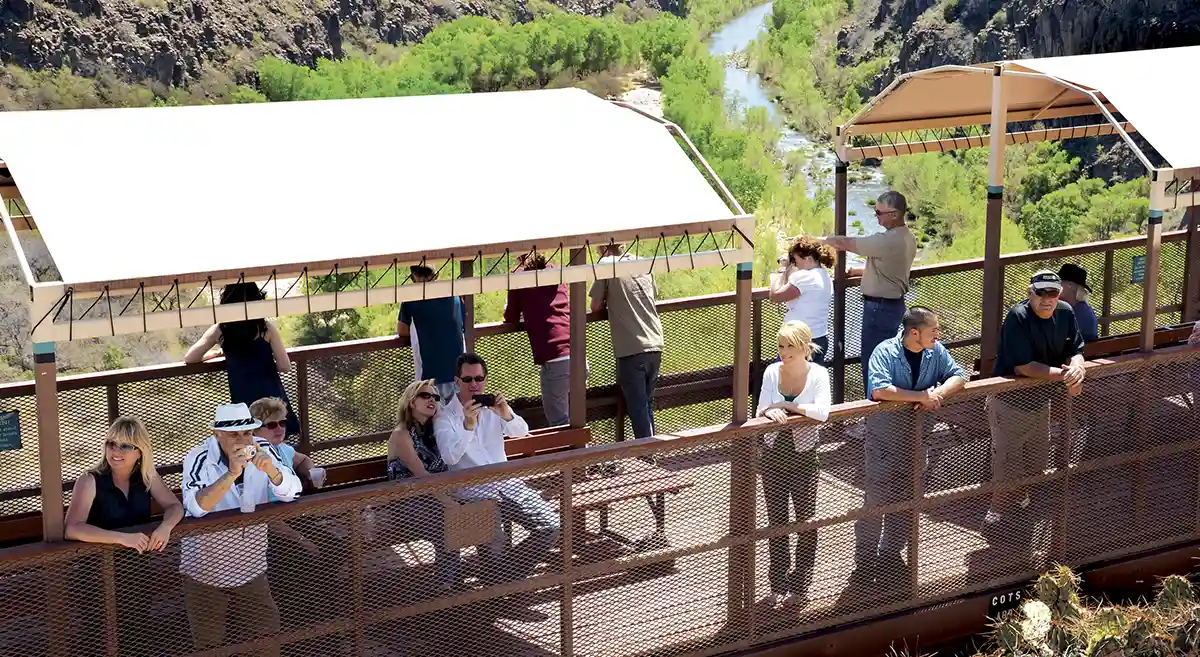
Heading Home
As the train heads back from Perkinsville to Clarkdale, the lush Canyon takes on an entirely different hue with the change of light from the perpetual movement of the sun. The illumination dances on the tops of the rock parapets and waltzes with the jagged and rocky crevices that caress the line. Ripples glisten on the slow-moving waters of the Verde River as a Blue Heron stands motionless on the shore, waiting to snag an afternoon snack. The clickety-clack of the wheels on the rails is more rhythmic, and you realize that you’re on this train, not to escape life but for life not to escape you.
